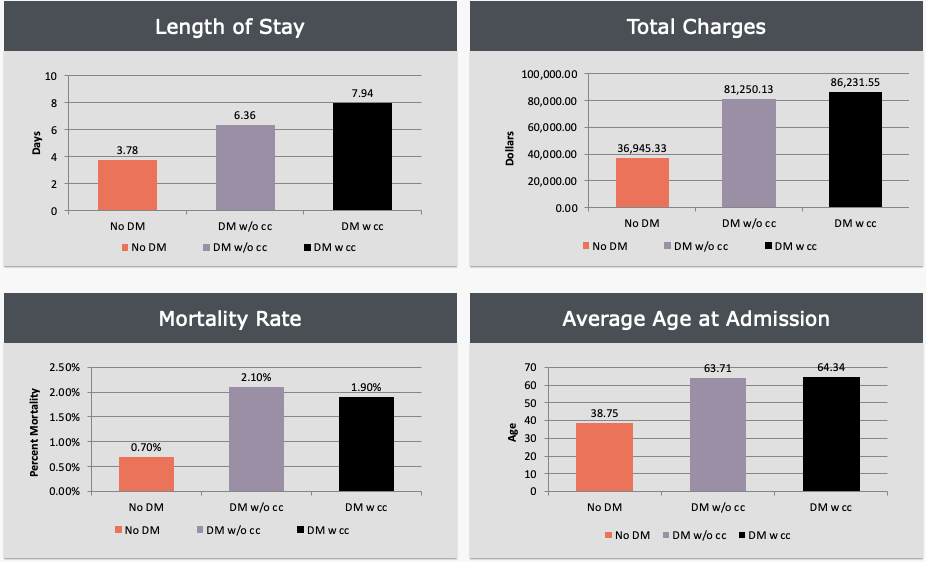Background: Transjugular intrahepatic portosystemic shunt (TIPS) creation is a commonly utilized procedure used for patients with chronic liver disease and resistant portal hypertension. Previous studies have explored the trends and short-term outcomes in TIPS procedures. This study aims to further compare short-term in-hospital outcomes of patients with diabetes mellitus (DM) when undergoing TIPS.
Methods: This retrospective cohort study utilized data from the Nationwide Inpatient Sample (NIS) to identify adult patients (18+) from 2012-2014 who underwent a TIPS procedure. ICD-9 codes identified patients with a history of diabetes with chronic complications and diabetes without chronic complications. Patients missing important clinical identifiers (age, gender, death) were excluded. Data analyses assessed hospital length of stay (LOS), inpatient charges, and mortality rate.
Results: Of the 49,074 patients identified to undergo a TIPS, 44,193 patients did not have a diagnosis of diabetes. 4,180 patients had a diagnosis of diabetes without chronic complications. 701 patients had a diagnosis of diabetes with chronic complications. In comparison to patients without a diagnosis of DM, significant differences were observed in both DM without chronic complications and DM with chronic complications respectively- Increased length of stay (3.78 vs 6.36 vs 7.94 days, p<0.0001), total hospital charges ($36,945.33 vs $81,250.13 vs $86,231.55, p<0.0001), mortality rate (0.7% vs 2.1% vs 1.9%, p<0.0001 and average age at admission (38.75 vs 63.71 vs 64.34 years).
Conclusions: Patients undergoing TIPS who are have a prior diagnosis of diabetes, with or without complications, suffer from longer LOS, increased total hospital charges and increased mortality rate. Optimization of treatment and management of diagnosed diabetes mellitus by physicians prior to TIPS can provide avenues for lowering length of stay, total charges and mortality rate. Monitoring of diabetes severity markers such as Hemoglobin A1C can possibly help predict patient outcomes post-TIPS procedure. Further analysis of population characteristics such as gender and race and the effects of these factors on length of stay, mortality rate, and total charges in patients with and without diabetes undergoing TIPS can be helpful in determining additional patient outcomes.


